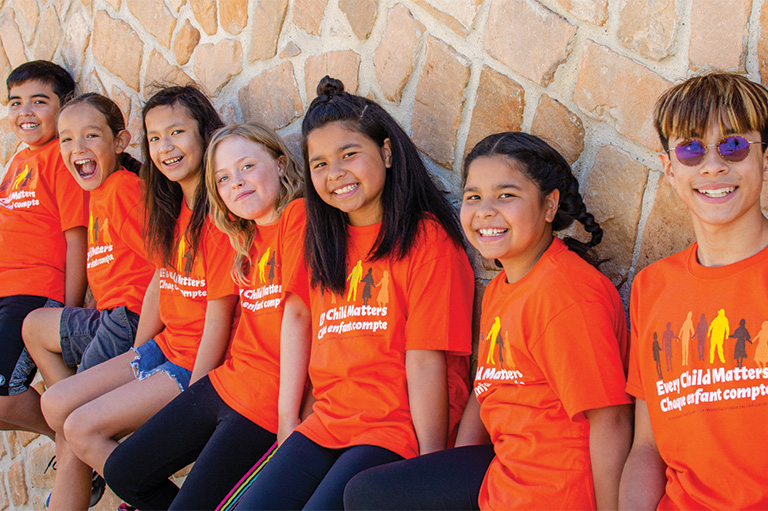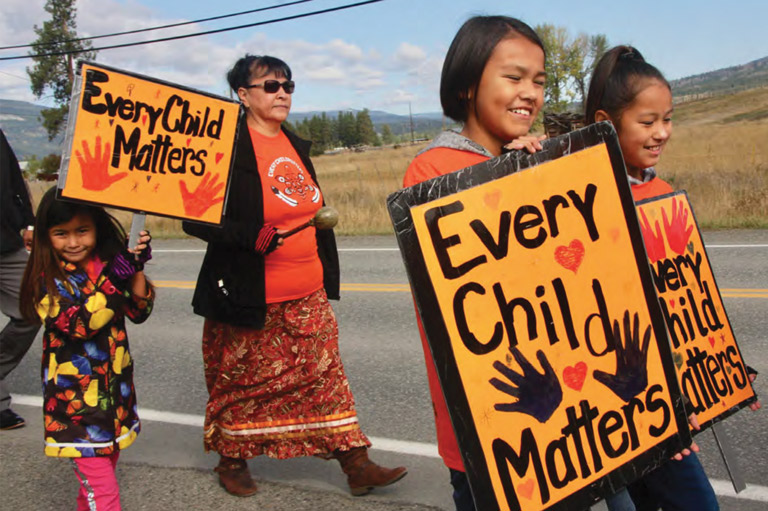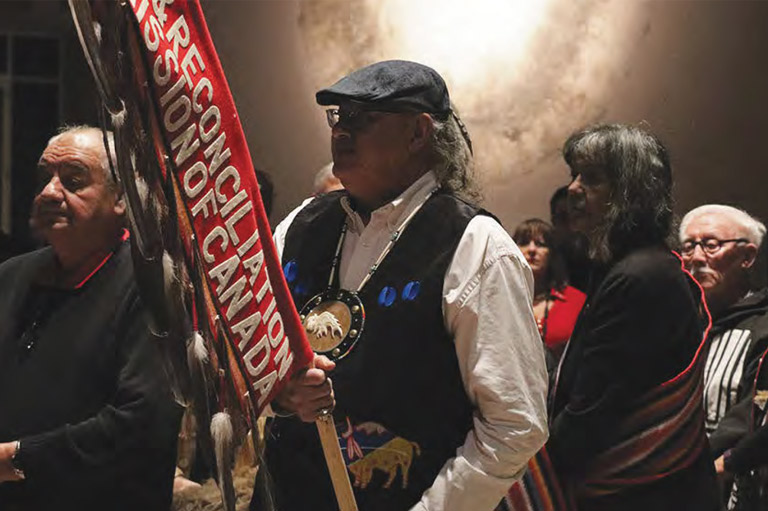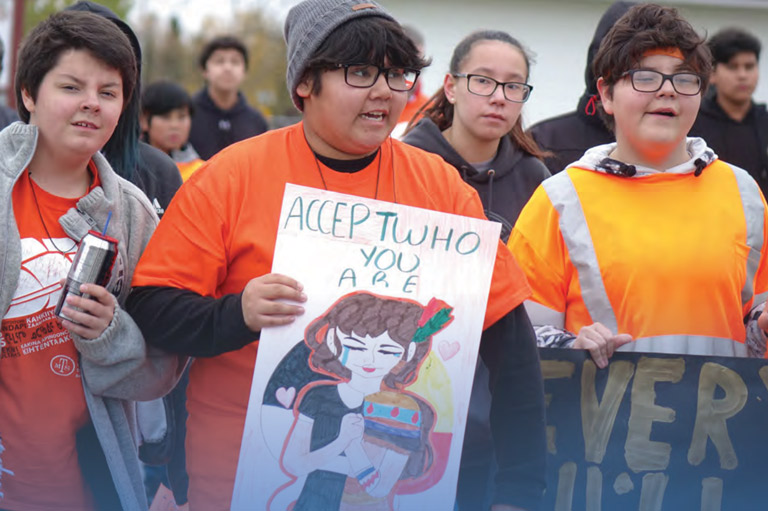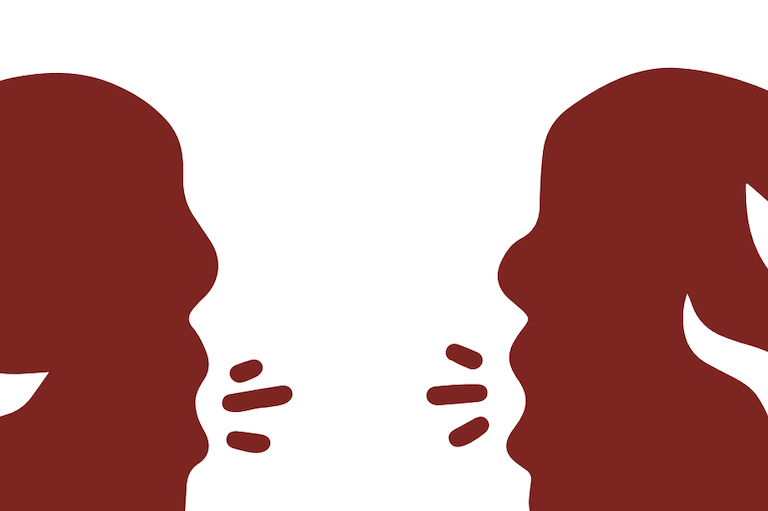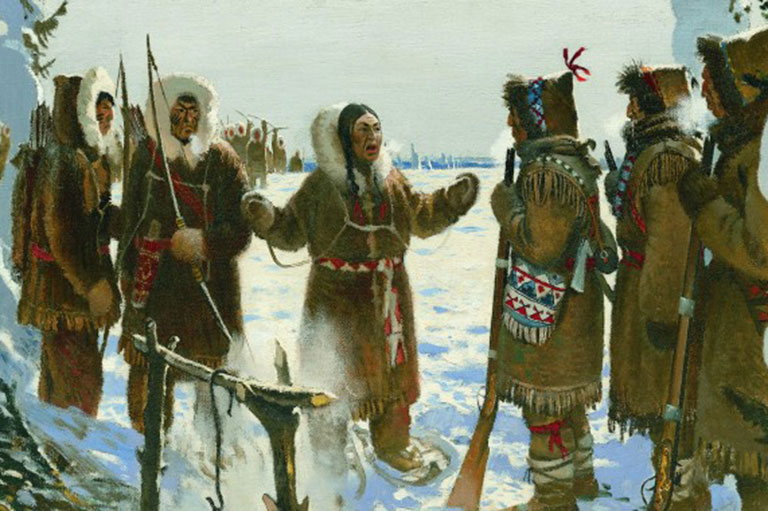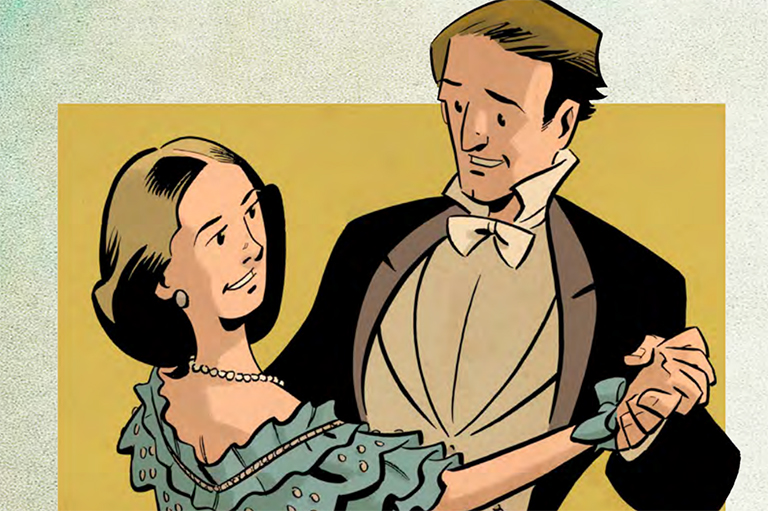Learning Humility Through Being a Witness
Grade Levels: 7/8, 9
Subject Area: Social Studies/History/Art
Lesson Overview
This set of lessons will help students understand the Indigenous principles of humility and witnessing. Through engaging in two acts of reconciliation, students will begin to understand the way humility puts us in a place of feeling small within the larger picture of issues and events. Then, through learning to be witnesses to stories and experiences, students will become empowered to take action to make change.
Time required
Three, 1-hour lessons. Lessons 1 and 2 can be completed in advance of the Every Child Matters virtual events. Lesson 3 can be completed afterwards.
Historical Thinking Concepts
- Establish historical significance
- Analyze cause and consequence
- Take historical perspectives
Learning Outcomes
Students will:
- Value acts of reconciliation
- Discuss ways of sharing stories of residential schools
- Understand their own responsibility in reconciliation as a witness to the stories of residential schools
- Investigate ways they can share the stories of residential schools to others
Background Information
Ways of witnessing to Indigenous peoples can vary between each nation. It is generally based on the idea of being responsible to pass on the stories and histories they have witnessed to others so that they are recorded in memory. As students listen to the stories of residential schools, they are witnessing a part of Canada’s history and an event that, when fully understood and shared with all Canadians, can bring our country towards reconciliation.
Humility can be a difficult concept to understand. It can be defined as being insignificant or lesser than others. It is often considered the opposite of being proud. Generally, humility is about balance in terms of how we see ourselves in relation to others. We are no better or worse, and in an Indigenous sense this is reflected in relation to all things, including people, animals, plants, or rocks and other minerals. To humble oneself is demonstrating that, although you are an important being, you are no more important than others, or other things of the earth including the water, the lands, and the sky.
When people listen to the stories of residential schools they often “hear” these stories with their ears, their minds, and their hearts. We can be humbled by witnessing these events and when we are in this place of humility, it can bring us to want to do something to make change. Students are important individuals. The value of humility can help them to see themselves in terms of the larger picture, and, through unselfish actions, they can feel better about themselves and come to understand they have the power to make changes for themselves, their families, their schools, their communities, and the country.
These lessons are meant to create this in students so they see themselves as witnesses and look to create action — even in small ways — that will lead their classrooms, schools, and communities towards reconciliation.
The Lesson Activity
Part 1: The Witness Blanket
The Witness Blanket, created by artist Carey Newman, is a national monument that reflects the stories of residential schools and reconciliation in Canada. Newman, with the help of others, collected more than 800 pieces from residential school sites, government buildings, churches, and cultural centers across the country, and placed them on large pieces of wood that form a blanket. He chose the idea of the blanket as it represents protection in his Kwakwak’awakw culture.
Have students view the video If Someone Came and Took Your Child?
Have students explore the blanket
- Have students think about the following questions:
- How do you feel as you look at the collective piece?
- Does it make you feel small in this huge presence of Canadian history?
- Does this make you want to do something, be helpful in some way, or demonstrate gratitude?
Have them record their observations in the box at the top of Handout 1.
After they have had adequate time (about 15 to 20 minutes) to reflect on this, have them share with others which piece they found most touched on their emotions.
Explain the terms humility and the way Indigenous people view witnessing. (This will be reviewed at the beginning of the next lesson).
Resources:
- Picking Up the Pieces: The Making of the Witness Blanket (Orca Books, 2019) by Carey Newman and Kirstie Hudson. E-book and pdf copies are available for sale online
Part 2: The Stained Glass Window
In 2008, then Prime Minister Stephen Harper made an official apology to former students and their families for the Canadian government’s part in Indian Residential Schools. Four years later the government installed a stained glass window, designed by Métis artist Christi Belcourt, to commemorate the apologies and the legacy of Residential Schools.
Review the terms humility and witnessing.
Have students view the video Remembering the Past: A Window to the Future (can be downloaded on MP4 format). Note: video mentions sexual abuse at Residential Schools
Have students fill in the bottom section of Handout 1 as they read the brochure on the stained glass window
Students can discuss their feelings about this piece, then brainstorm some actions they could take that would represent reconciliation (or they can write their answers on Handout 1 and then collect their ideas after).
They can keep these thoughts and ideas in mind until after the Every Child Matters virtual event on September 30, or determine a plan of action at this time.
Note: There is a printable colouring book of the stained glass window that students/classes can reproduce to display in their classes or schools. (To make them appear more transparent, after colouring rub cooking oil on the back of each piece.)
Part 3: Becoming a Witness
After students have participated in the Every Child Matters live event, have them determine how they can witness the stories of residential schools, the Survivors, and their descendants. This may be done as a large group, in small groups, or individually. This can be anything from murals within the schools, painting classroom or school windows, or creating smaller pieces such as tiles.
For examples of students’ reconciliation work, visit projectofheart.ca. You can find more examples of student initiatives under each province in the main navigation menu.
Further questions of Inquiry:
- What other art pieces that represent reconciliation have been created in Canada and what has been their significance?
- What reconciliation actions have been taken through music or dance and how have these projects been promoted?
There's more!
Themes associated with this article
Advertisement

